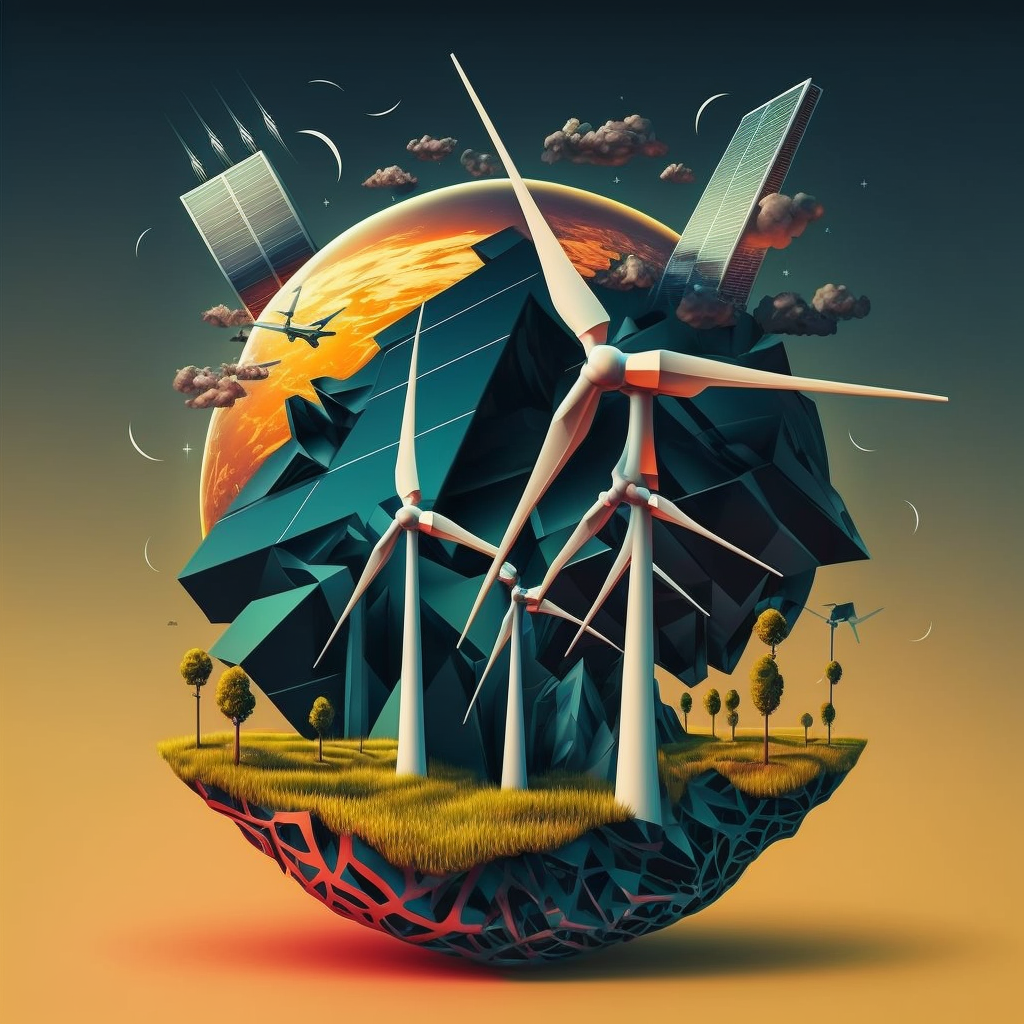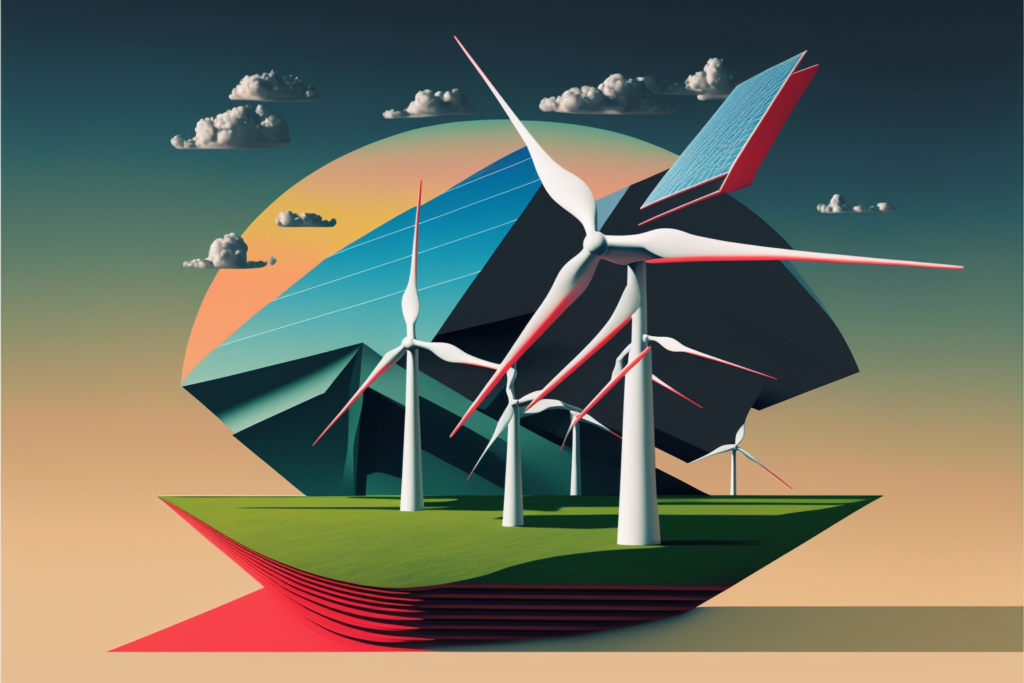I. Introduction
The Utilities sector is made up of various utility services, including electric power generation and transmission, natural gas distribution, steam supply, water supply, and sewage removal. The Electric Power Generation industries and Electric Power Transmission industry dominate the sector, generating 67.8% and 19.6% of sector revenue respectively in 2022. Similarly, the Natural Gas Distribution industry is expected to generate 19.6% of revenue in 2022. In this research article, we’ll take a closer look at the trends and drivers of the Utilities sector, as well as the challenges it faces in the form of rising regulation.

II. Sector Overview
The Utilities sector is expected to see a significant increase in revenue and profit in 2023. Revenue is estimated to increase at an annualized rate of 2.1% to $962.5 billion over the five years to 2022, including an increase of 7.4% in 2022 alone. Average industry profit, measured as earnings before interest and taxes, is expected to account for 31.2% of revenue in 2022. However, over the next five years, revenue is forecast to decline an annualized 0.1% to $958.4 billion due to anticipated decline in the price of natural gas.
III. Revenue and Profit Trends
The Utilities sector has benefited from an increase in the price and consumption of electric power during the current period. Similarly, sector revenue has largely increased from the tremendous rise in the price of natural gas in wake of the COVID-19 pandemic with natural gas distributors passing on higher costs to downstream consumers. However, growth in renewable energy generation is likely to slow as the Production Tax Credit (PTC) and Investment Tax Credit (ITC) are set to expire during the outlook period. Nevertheless, demand for renewable energy from the electricity distribution and generation industry group is expected to grow to the detriment of coal-generated power.

I. Tailwind Drivers
Electric power consumption is expected to increase in 2023, representing a potential opportunity for the sector. This increased consumption is likely to drive revenue growth for electric power generation and transmission industries, which are expected to generate 67.8% of sector revenue in 2022.
The price of electric power is expected to increase in 2023, resulting in higher revenue for electric transmission utilities. The exact extent of the price increase is not specified.
Housing starts, which indicate the number of new residential homes under construction, are expected to increase in 2023. This increase in housing starts is likely to drive demand for sector services, as all industry services are staples in homes.
The industrial production index is expected to increase in 2023. This increase in industrial activity is likely to drive demand for energy, resulting in increased revenue for the Utilities sector.
II. Headwind Drivers
The price of natural gas is anticipated to increase in 2023. However, this increase in price may negatively impact revenue for natural gas distribution industries, which are expected to generate 19.6% of sector revenue in 2023.
Regulation for the Utilities sector is expected to increase in 2023, posing a potential threat to the industry. Rising regulation can slow revenue growth for the sector.
Growth in renewable energy generation is likely to slow as the Production Tax Credit (PTC) and Investment Tax Credit (ITC) are set to expire during the outlook period. This may negatively impact revenue growth for the sector.
Over the five years to 2027, revenue for the Utilities sector is expected to decline, albeit at a marginally slower rate. An anticipated decline in the price of natural gas is expected to be a major deterrent to revenue growth over the coming years.
It’s worth noting that a decline in natural gas price would benefit the natural gas utilities as it means they would be paying less to acquire the gas they distribute, but it would also mean they would have to charge less to the end consumer, which would decrease their revenue.

Power and Energy Utilities Sector
IV. Key External Drivers
- Electric power consumption: Electric power consumption typically moves in line with sector demand and revenue. However, if it increases too slowly, it can harm sector revenue. Electric power consumption is expected to increase in 2023, representing a potential opportunity for the sector.
- Price of electric power: Electricity prices are determined by public utility commissions. Although demand for electricity typically contracts when prices are high, electric transmission utilities can generate more revenue from higher prices. The price of electric power is expected to increase in 2023.
- Price of natural gas: Natural gas utilities distribute natural gas to consumers. As a result, revenue is highly driven by gas prices. Additionally, companies that generate electricity from natural gas garner higher profit and generate more electricity when the price of natural gas falls. The price of natural gas is anticipated to increase in 2023.
- Housing starts: Housing starts indicate the number of new residential homes under construction. An increase in housing starts heightens demand for sector services because all industry services are staples in homes. Housing starts are expected to increase in 2023.
- Industrial production index: Industrial activity trends set the overall level of demand for energy. Therefore, as activity increases and manufacturers increase production, demand for sector services increase. The industrial production index is expected to increase in 2023.
V. Regulations for the Utilities Sector
Regulation for the Utilities sector is expected to increase in 2023, posing a potential threat to the industry. Regulatory agencies oversee the pricing, reliability and safety of sector services. Rising regulation slows revenue growth for the sector. It is important for sector operators to stay informed about any changes in regulations and how they may affect their business.
VI. Industry Outlook: Utility and Power Sector
The utility and power sector is expected to experience a decline in revenue over the next five years, primarily due to lower natural gas prices. However, there are also several tailwinds that are expected to drive growth in certain areas of the sector.
Electric Power Generation and Transmission
The electric power generation and transmission industries are both forecasted to grow at a faster rate than over the past five years. This is due to a combination of general economic growth and increased demand from industrial and commercial markets. However, growth in electric power consumption from households is expected to slow as energy efficiency improves.
Natural Gas Distribution
The natural gas distribution industry is expected to experience a decline in growth moving forward. This is due to a combination of declining natural gas prices and a slowdown in natural gas consumption.
Water Supply and Irrigation Systems, Steam and Air-Conditioning Supply, and Sewage Treatment Facilities
The water supply and irrigation systems, steam and air-conditioning supply, and sewage treatment facilities industries are all expected to grow at a faster rate over the next five years as the US population increases and demand for business services rises.
Sector Profit
Despite the expected growth in certain areas of the sector, sector profit is anticipated to decline during the outlook period, primarily due to increased wage costs.
Regulatory Change and Renewable Power
The removal of the Clean Power Plan (CPP) and the expiration of the Federal Investment Tax Credit and Production Tax Credit will likely slow some of the exponential growth that the renewables segment of electric power generation has experienced during the current period. However, state initiatives for clean energy and the implementation of Renewable Portfolio Standards (RPS) by many state governments are expected to provide incentives for operators to procure electricity from renewable resources.
VII. Conclusion
The Utilities sector, including electric power generation and transmission, natural gas distribution, steam supply, water supply and sewage removal, is expected to see a boost in revenue in 2023 due to increased demand for electricity and natural gas. However, the industry will also face challenges, such as the expiration of tax credits for renewable energy and declining natural gas prices. It is important for sector operators to stay informed about industry trends and regulations to stay competitive in the market.











